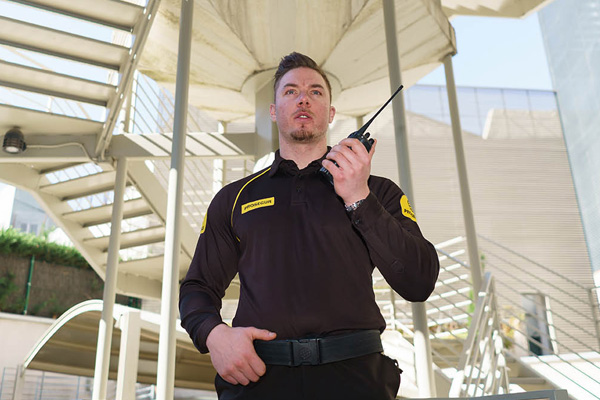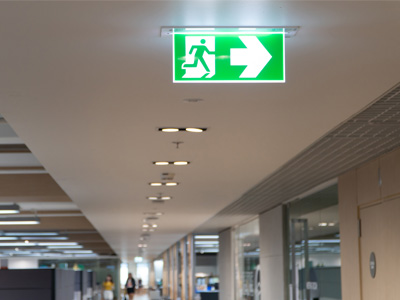Blog
How to Talk to Your Employees About Situational Awareness

Developing a keen sense of situational awareness is an important part of staying safe. Learning to “read your environment” and knowing how to respond appropriately is critical. This goes not just for security professionals, but for all employees of your company. So how can you help improve situational awareness of your team members, whether they work in security or not? Here are some ideas for the next time you have an opportunity to talk to your team members about safety…
Say you were walking down a sidewalk in the evening and noticed several intoxicated individuals walking towards you. It might instinctively occur to you to cross the street or step into a store to avoid an encounter with them. That is “situational awareness,” which resulted in a specific action to keep you safe, or at least that avoided the potential for injury or anxiety from an encounter that you might not have been able to effectively control.
 Developing a sense of situational awareness that rises to the level of purposeful action is the goal. When you drive on a highway and see someone “driving crazy,” what do you do? You slow down and put distance between yourself and that driver, right? Putting distance between yourself and any type of harm is good advice to follow, but how do you put this into practice in your daily life?
Developing a sense of situational awareness that rises to the level of purposeful action is the goal. When you drive on a highway and see someone “driving crazy,” what do you do? You slow down and put distance between yourself and that driver, right? Putting distance between yourself and any type of harm is good advice to follow, but how do you put this into practice in your daily life?
Knowing your work environment, whether you work in an office building, production facility, retail setting or other environment is critical. Where are the closest exits to where you sit? And what if the first two you can think of are not available because the route is blocked – do you know other exist available to you? If you had to, are you prepared to break a window and exit your work area that way (assuming you are on a ground floor)?
If you had to “shelter-in-place” during a weather-related emergency, or an active shooter event, do you know where to go? For weather-related incidents, an interior hallway or stairwell away from windows is ideal. For active shooter events, if you cannot exit safely, do you know the difference between cover and concealment? Concealment may cause you not to be visible to an assailant (like under your desk, or in a closet) but it won’t help prevent injury if someone is discharging a weapon indoors. Cover will provide protection from gunfire (like inside a locked room with a solid door, solid walls, and with no interior windows).
 This approach can translate into other environments like a department store or mall, grocery store or sporting event. When you enter these venues, do you take notice of where the exits are and the general layout of the facility? Would you even think about running through a store to the back wall to reach a service corridor if you had to escape? In nearly every mall there is a service corridor that runs behind all the stores in each wing of the mall. By fire code, there must generally be at least two ways to exit any business over a certain size, so large retail stores will always have two or more exits. Movie theaters will always have two or more ways to exit, too.
This approach can translate into other environments like a department store or mall, grocery store or sporting event. When you enter these venues, do you take notice of where the exits are and the general layout of the facility? Would you even think about running through a store to the back wall to reach a service corridor if you had to escape? In nearly every mall there is a service corridor that runs behind all the stores in each wing of the mall. By fire code, there must generally be at least two ways to exit any business over a certain size, so large retail stores will always have two or more exits. Movie theaters will always have two or more ways to exit, too.
In a public area, whether a mall, sporting event, grocery store or university, if you hear repeated “popping” sounds and see people running do you instinctively grab your cell phone to start recording or do you run for cover, or leave the area? What is your initial reaction? In the workplace, training employees on run, hide or fight to respond to active shooter events has become commonplace. But how often do you conduct a table-top exercise to see how prepared everyone is? When you have your annual fire warden training event, why not add a module on active shooter awareness and response?
These are extreme events, and most of us will never encounter such tragedies, thankfully. But what about simply walking back to your car in the parking deck, or to a surface parking lot or on street parking? Do you take advantage of the property security services to provide an escort? Do you walk with your keys in hand prepared to open your car as soon as you arrive?
 Do you inspect the area around your car, from a safe distance, to determine if everything “appears okay?” Is there another car parked next to yours? Is it blocking your access in any way? Is there a “suspicious” car nearby? People just sitting and watching instead of exiting and going someplace? “Reading the environment” and making a general assessment of the area is step one.
Do you inspect the area around your car, from a safe distance, to determine if everything “appears okay?” Is there another car parked next to yours? Is it blocking your access in any way? Is there a “suspicious” car nearby? People just sitting and watching instead of exiting and going someplace? “Reading the environment” and making a general assessment of the area is step one.
Quickly checking the backseat of your car before entering your vehicle is step two; immediately locking your doors upon entry is step three; and turning around to return someplace where you feel safer to seek help if anything makes you uncomfortable is the most important step. First and foremost, trust your instincts.
But what about other situations? What about co-workers who talk repeatedly about the stress they are under at home or at work, who act out with violent or loud outbursts, who talk about coworkers or bosses in a way that makes you feel uncomfortable, who speak about suicide or firearms? These are all possible signs of distress that could result in violent acts. These situations must be reported to a central authority, generally Human Resources, so the employee can be provided guidance and support before they act out and harm themselves or someone else.
Having policies and procedures in the workplace that educate and encourage employees to report these actions to a central point ensures that the employer, who has a duty of care to provide a safe work environment, has the situational awareness they need to deliver on that obligation.
At work or in our personal lives, developing a keen sense of your surroundings is critical to your personal safety and the safety of others. Being prepared to react quickly, to avoid emerging danger (rowdy crowds, demonstrations, unfamiliar sounds or unexpected movement of people) and move to an area where your safety is more certain – that is situational awareness. Paying close attention to your environment every day does not make you paranoid, it helps prepare you to take responsibility for your own safety. Knowing how and when to react helps ensure your safety.
* * *
 Joseph Murphy is the Senior Vice President, Commercial Sales/GenSec at Prosegur USA.
Joseph Murphy is the Senior Vice President, Commercial Sales/GenSec at Prosegur USA.
With nearly forty years of security services management experience Joe is a recognized professional in Atlanta’s physical security marketplace. Featured in a BOMA Insight magazine article titled “The Leaders Among Us,” Joe is actively involved in Atlanta’s security landscape and has published numerous articles in industry publications.
Joe has consulted with many Fortune 500 companies operating across the US and has serviced several thousand properties during his career. He has worked for such notable firms as Borg Warner Protective Services establishing the Olympic Operations Center for the 1996 Olympic Games in Atlanta. Today he leads Prosegur’s commercial services division in the U.S., serving as a Senior Vice President.
Joe is a long-term member of ASIS International, past president of the FBI’s InfraGard Program (8+ years), and was a founding board member of the Southeast Emergency Response Network (SEERN). He graduated from Fairleigh Dickinson University with a degree in Marine Biology, and is the father of two beautiful daughters adopted from China.